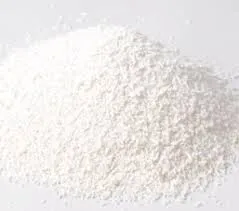
about monosodium glutamate
Understanding Monosodium Glutamate The Flavor Enhancer
Monosodium glutamate (MSG) is a flavor enhancer that has been widely used in various cuisines around the world. Known for its ability to intensify the umami taste of food, MSG has sparked both fervent support and considerable controversy since its introduction to the culinary landscape.
What is Monosodium Glutamate?
Chemically speaking, monosodium glutamate is the sodium salt of glutamic acid, an amino acid that occurs naturally in many foods, including tomatoes, cheese, and mushrooms. MSG is often produced through a fermentation process, whereby starches are broken down into glucose, which is then fermented using specific bacteria to produce glutamate.
MSG is most commonly found in processed foods, snacks, canned soups, and seasonings. It is often added to enhance the flavor profile, providing a savory taste that many people find appealing. In Asian cuisine, especially Chinese food, MSG has become a staple ingredient. It is also prevalent in fast food and other prepared meals, where it can help compensate for the reduction in natural flavors that occurs during processing.
The Umami Flavor
The unique taste of umami, often described as a meaty or savory flavor, was identified by Japanese scientist Kikunae Ikeda in 1908, who first isolated glutamate as its source. Umami is considered one of the five basic tastes, alongside sweet, salty, sour, and bitter. This discovery led to the initial development of MSG as a culinary additive, allowing chefs and home cooks to replicate and amplify this flavor profile in their dishes.
Health Concerns and Controversies
about monosodium glutamate

Despite its popularity, MSG has faced significant scrutiny and controversy over the years. Some individuals claim to experience adverse reactions to foods containing MSG, describing symptoms such as headaches, flushing, sweating, and nausea. This set of symptoms was collectively referred to as Chinese Restaurant Syndrome in the late 1960s, which raised concerns about the safety of MSG consumption.
However, extensive scientific research has largely discredited the notion that MSG poses any significant health risks to the general population. The U.S. Food and Drug Administration (FDA) classifies MSG as generally recognized as safe (GRAS), and numerous studies have found no consistent evidence linking MSG to severe adverse effects. Organizations such as the American Medical Association and the World Health Organization have concluded that MSG is safe to consume for the vast majority of people.
The Cultural Context
In various cultures, MSG is embraced for the depth of flavor it adds to dishes. It allows chefs to create hearty, satisfying meals while managing food costs effectively. Additionally, the global food industry continues to rely on MSG to enhance the flavors of low-sodium products, aiding in the preservation of taste without excessive salt.
In contrast, there is a growing trend towards natural and organic ingredients, leading some food manufacturers to remove MSG from their products due to consumer preferences. The backlash against synthetic additives has led to a shift in how flavors are enhanced in the culinary world.
Conclusion
Monosodium glutamate remains a widely utilized ingredient celebrated for its ability to amplify flavor. While it continues to be a topic of debate surrounding health concerns, substantial scientific evidence supports its safety for consumption. Understanding MSG and its role in enhancing the umami flavor helps demystify this ingredient and allows individuals to make informed choices regarding its use in cooking and food products. Whether one embraces or avoids MSG, its impact on global cuisine is undeniable, reflecting the diverse preferences and practices that continue to shape our eating experiences.
-
Aluminum Hydroxide: Quality Gels & Dried Gel AntacidNewsAug.31,2025
-
Buy High-Quality Trichloroisocyanuric Acid for Sale | TCCA 90% SupplierNewsAug.30,2025
-
Pure Sodium Dichloroisocyanurate Dihydrate | Powerful DisinfectantNewsAug.29,2025
-
Industrial Chemicals: Quality & Purity for Every IndustryNewsAug.28,2025
-
Nitrile Rubber Honoring Strict Production StandardsNewsAug.22,2025
-
Aspartame Ingredients Honoring Food Safety ValuesNewsAug.22,2025
-
Fertilizer for Balanced Plant NutritionNewsAug.22,2025
Hebei Tenger Chemical Technology Co., Ltd. focuses on the chemical industry and is committed to the export service of chemical raw materials.
-

view more DiethanolisopropanolamineIn the ever-growing field of chemical solutions, diethanolisopropanolamine (DEIPA) stands out as a versatile and important compound. Due to its unique chemical structure and properties, DEIPA is of interest to various industries including construction, personal care, and agriculture. -

view more TriisopropanolamineTriisopropanolamine (TIPA) alkanol amine substance, is a kind of alcohol amine compound with amino and alcohol hydroxyl, and because of its molecules contains both amino and hydroxyl. -

view more Tetramethyl Thiuram DisulfideTetramethyl thiuram disulfide, also known as TMTD, is a white to light-yellow powder with a distinct sulfur-like odor. It is soluble in organic solvents such as benzene, acetone, and ethyl acetate, making it highly versatile for use in different formulations. TMTD is known for its excellent vulcanization acceleration properties, which makes it a key ingredient in the production of rubber products. Additionally, it acts as an effective fungicide and bactericide, making it valuable in agricultural applications. Its high purity and stability ensure consistent performance, making it a preferred choice for manufacturers across various industries.





